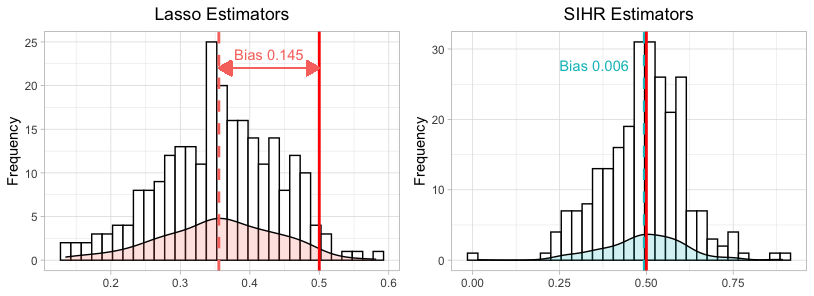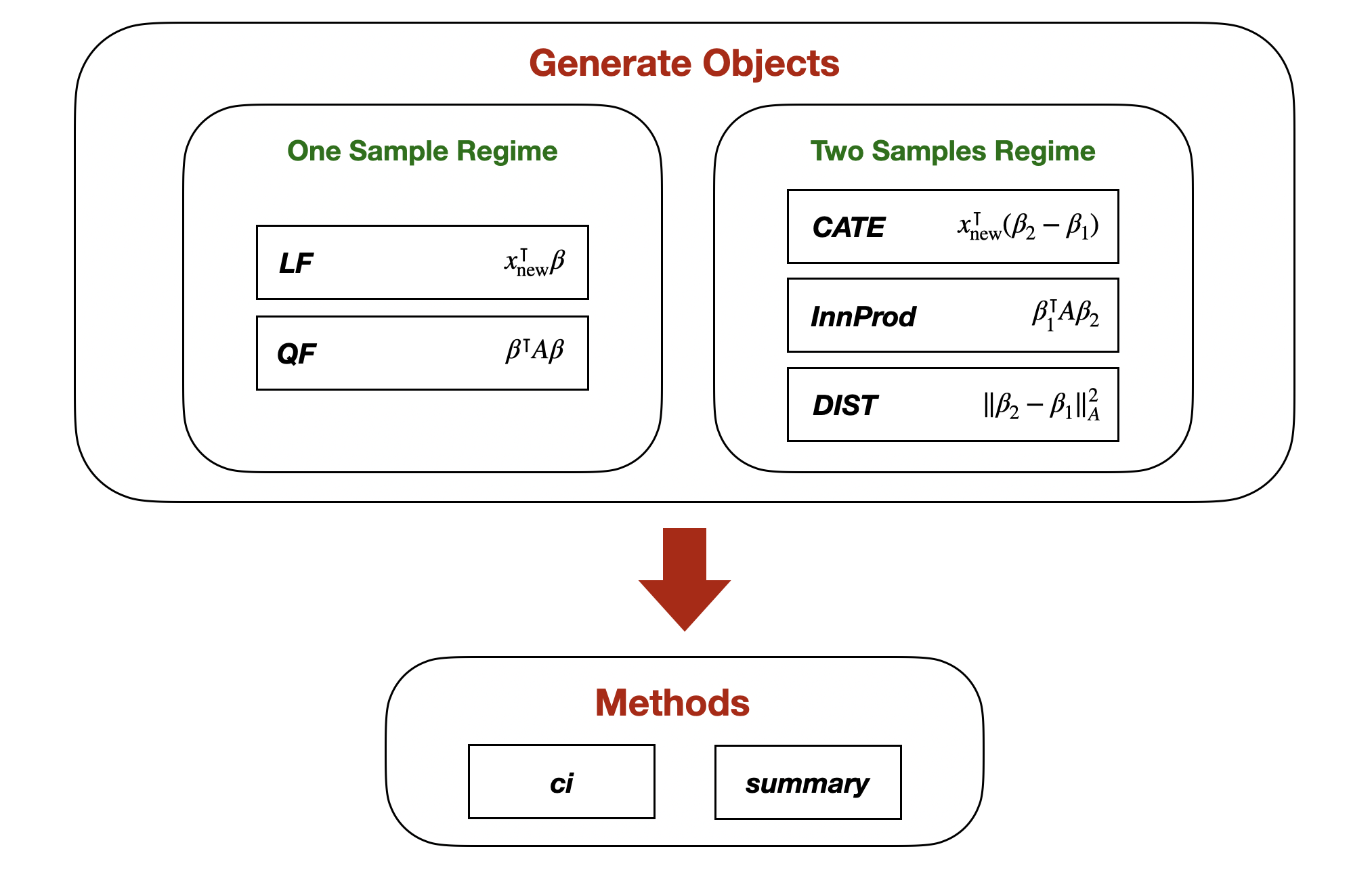
Illustration of Bias Correction
The hardware and bandwidth for this mirror is donated by METANET, the Webhosting and Full Service-Cloud Provider.
If you wish to report a bug, or if you are interested in having us mirror your free-software or open-source project, please feel free to contact us at mirror[@]metanet.ch.
The package SIHR(Statistics Inference for High-dimensional Regression) facilitates statistical inference in high-dimensional generalized linear models (GLM) with continuous and binary outcomes. It offers tools to construct confidence intervals and to conduct hypothesis testing for low-dimensional objectives (e.g. \(e_1^\intercal \beta\)) in both one-sample and two-sample regression regimes.
In numerous scenarios, regression problems often involve a number of dimensions \(p\) surpassing the sample size \(n\). Traditional estimators, derived through penalized maximum likelihood methods like Lasso and Ridge, are unsuitable for statistical inference due to significant estimation bias introduced by the penalty term. Our package leverages debiasing methods, addressing a broad spectrum of inference challenges in high-dimensional GLMs, applicable to both continuous and binary outcomes.
To demonstrate the effect of bias correction, we conducted 250 simulation rounds. The data generation process is defined with \(n=p=200\): for \(1\leq i\leq n\), the covariates follows \(X_i\sim \mathcal{N}({0}_p, \mathbf{I}_p)\), the outcome follows \(Y_i = X_i^\intercal \beta + \mathcal{N}(0,1)\), where \(\beta= (0.5_{5}, 0.2, 0.4, 0.6, 0.8, 1, {0}_{p-10})\).
Our objective was to conduct inference on the first coefficient \(e_1^\intercal \beta = 0.5\). However, as illustrated in the left subfigure, Lasso estimators from the glmnet package exhibit considerable bias. Conversely, our SIHR estimators, shown in the right subfigure, are unbiased and thus ready for valid statistical inference.

Illustration of Bias Correction
You can install the development version from GitHub with:
# install.packages("devtools")
devtools::install_github("zywang0701/SIHR")The package consists of 5 main functions in one or two samples regime, with different low-dimensional objectives, respectively. Having fitted the model, it allows for two methods to report the result.

Outline of SIHR
We have prepared several vignettes to help users get ready with SIHR:
These binaries (installable software) and packages are in development.
They may not be fully stable and should be used with caution. We make no claims about them.